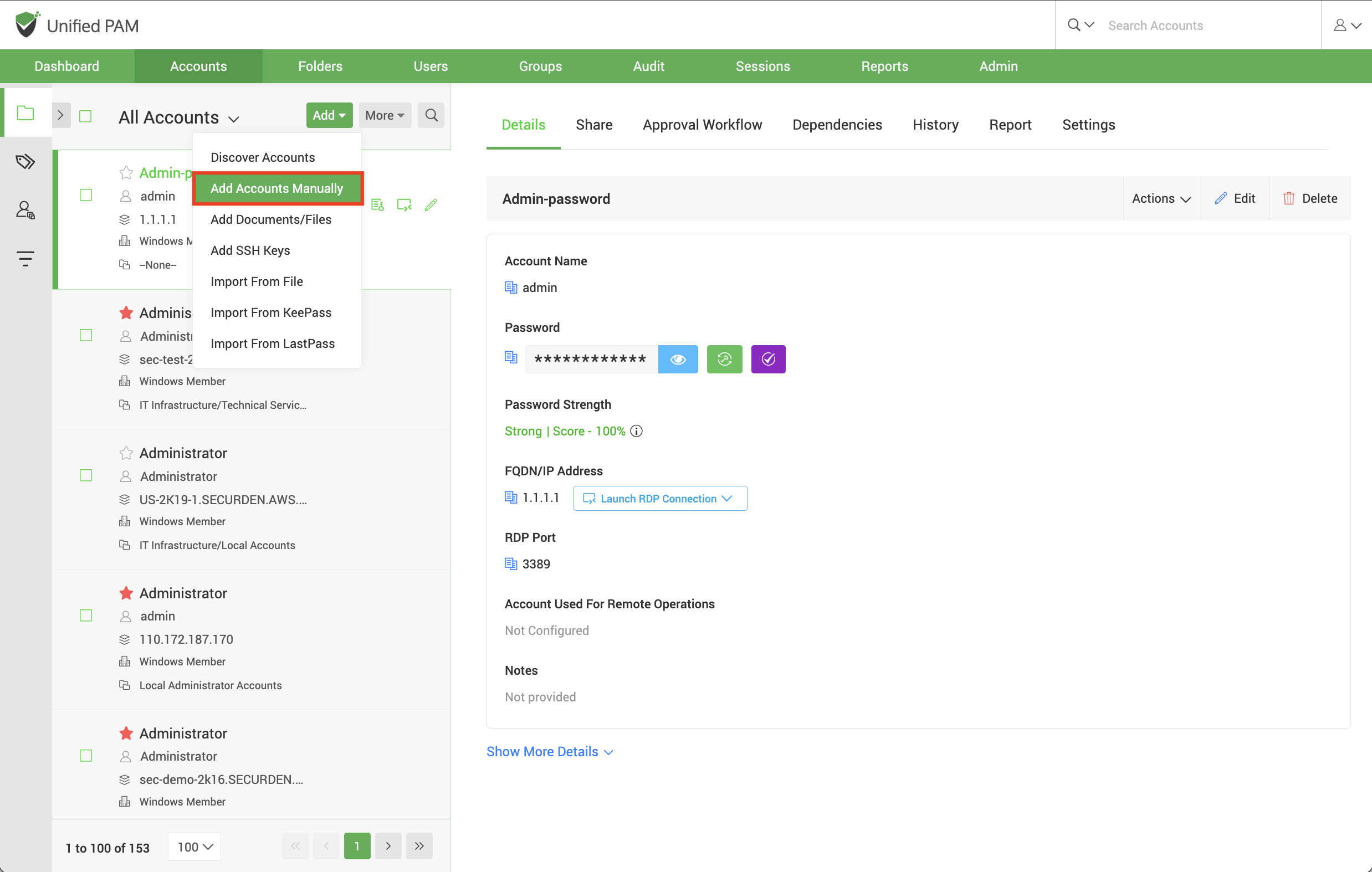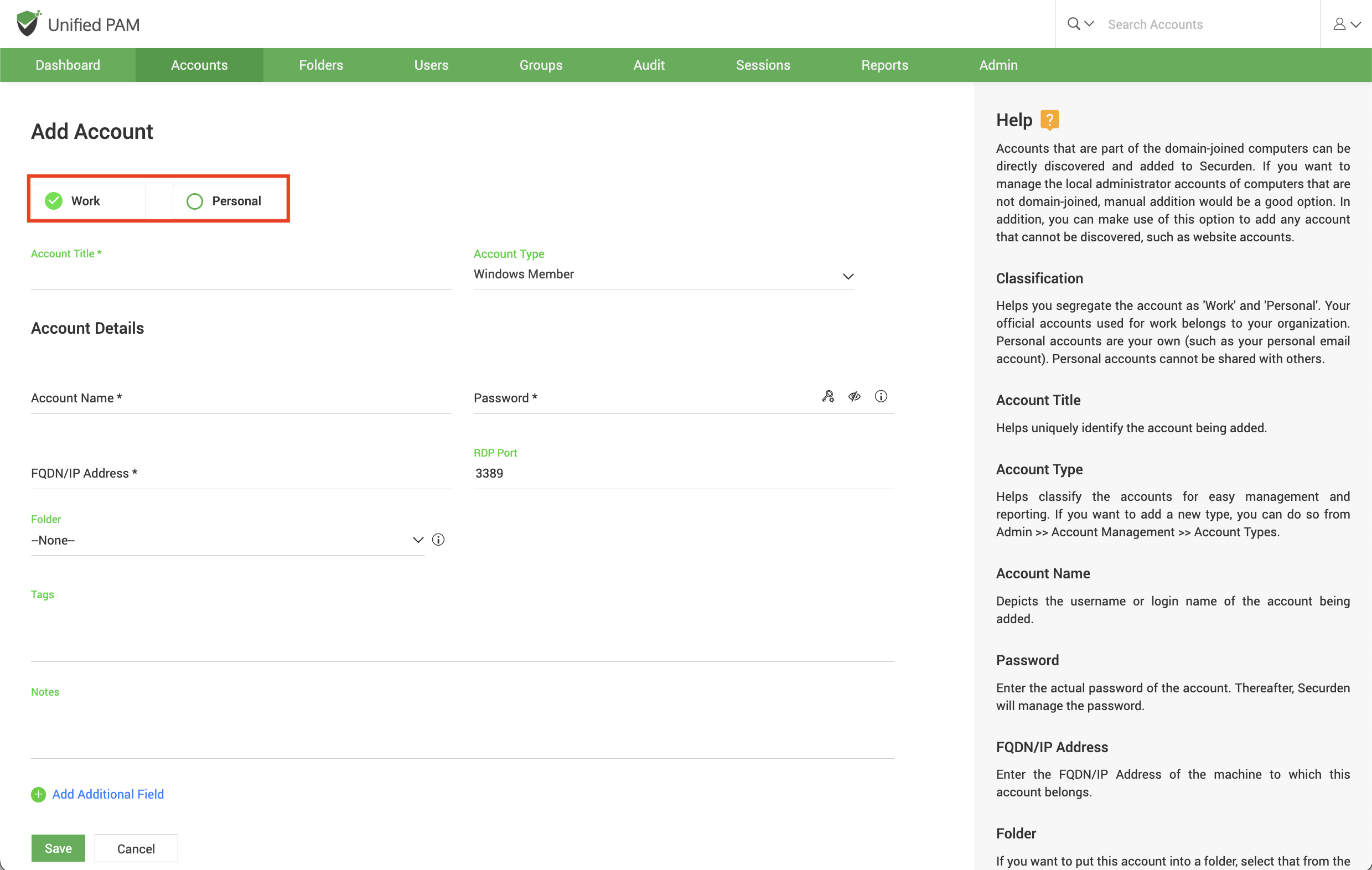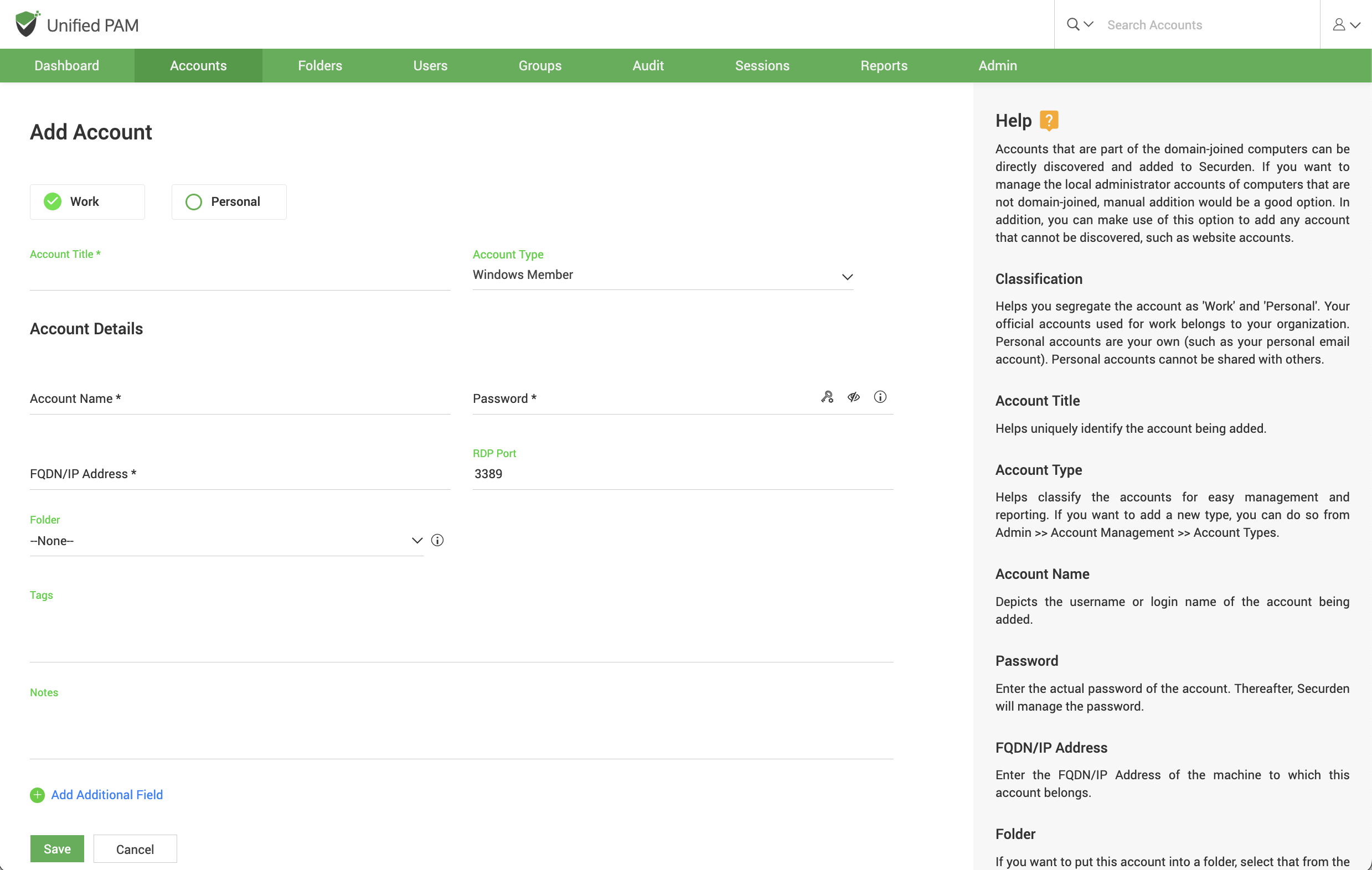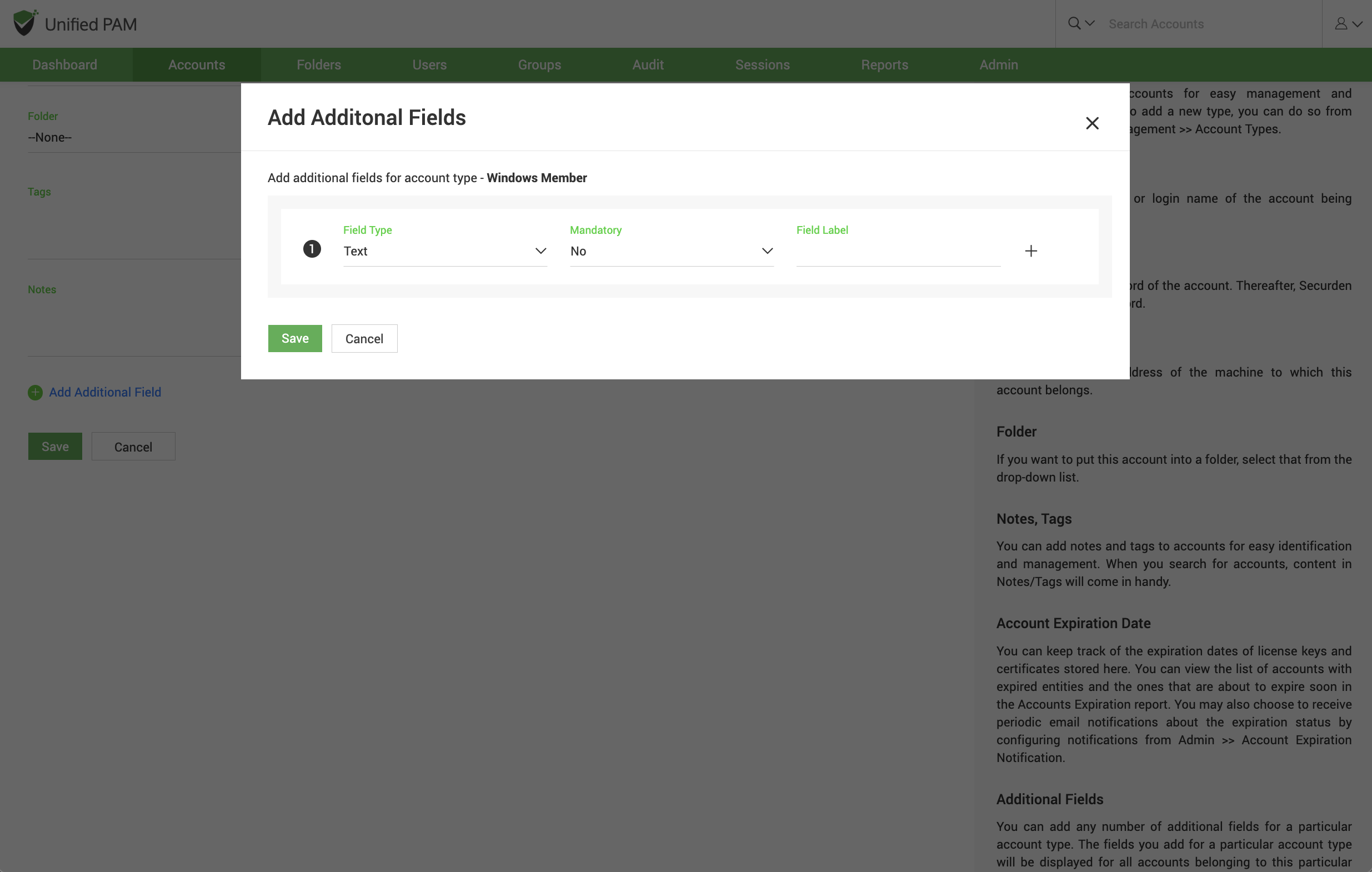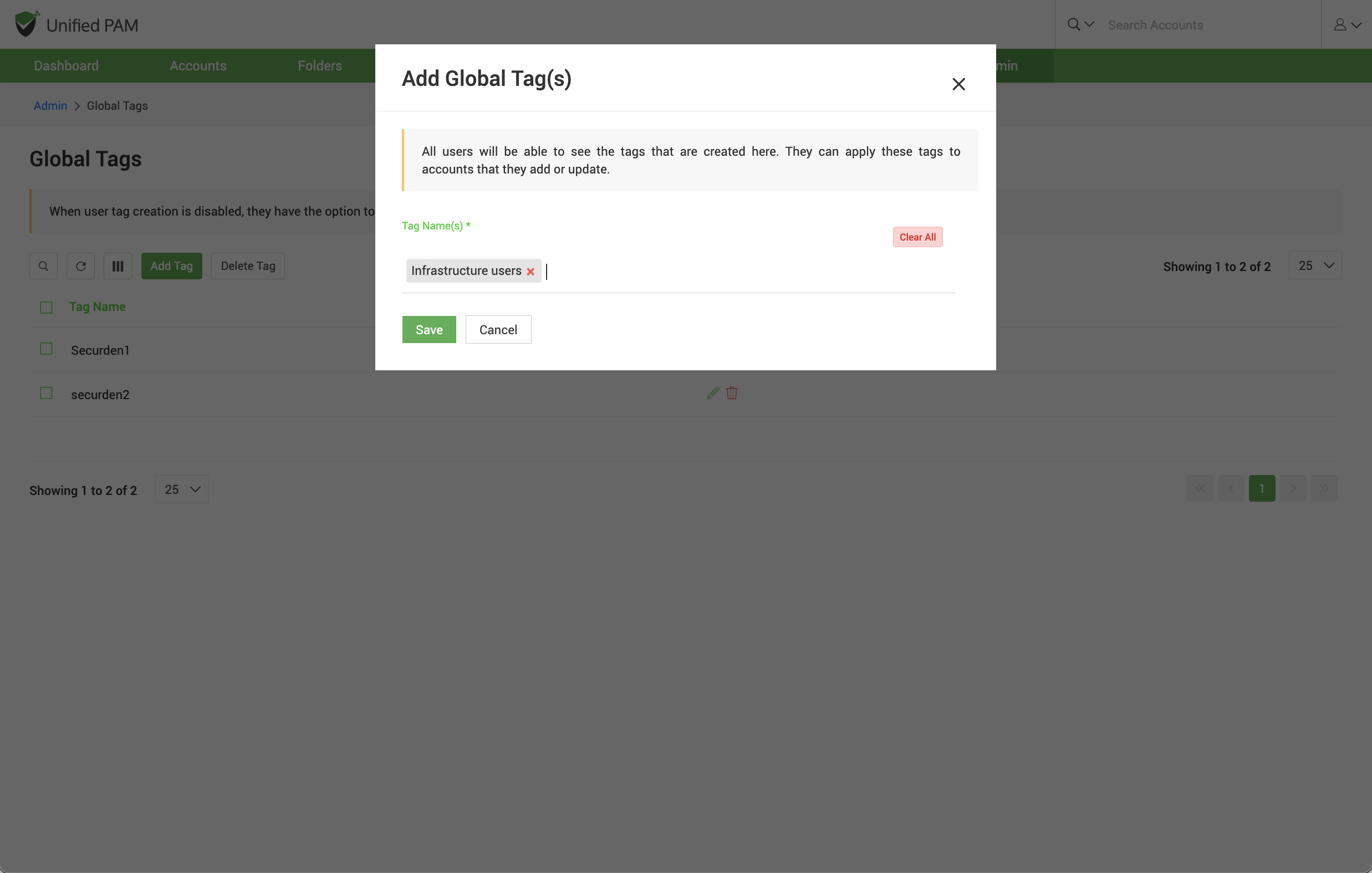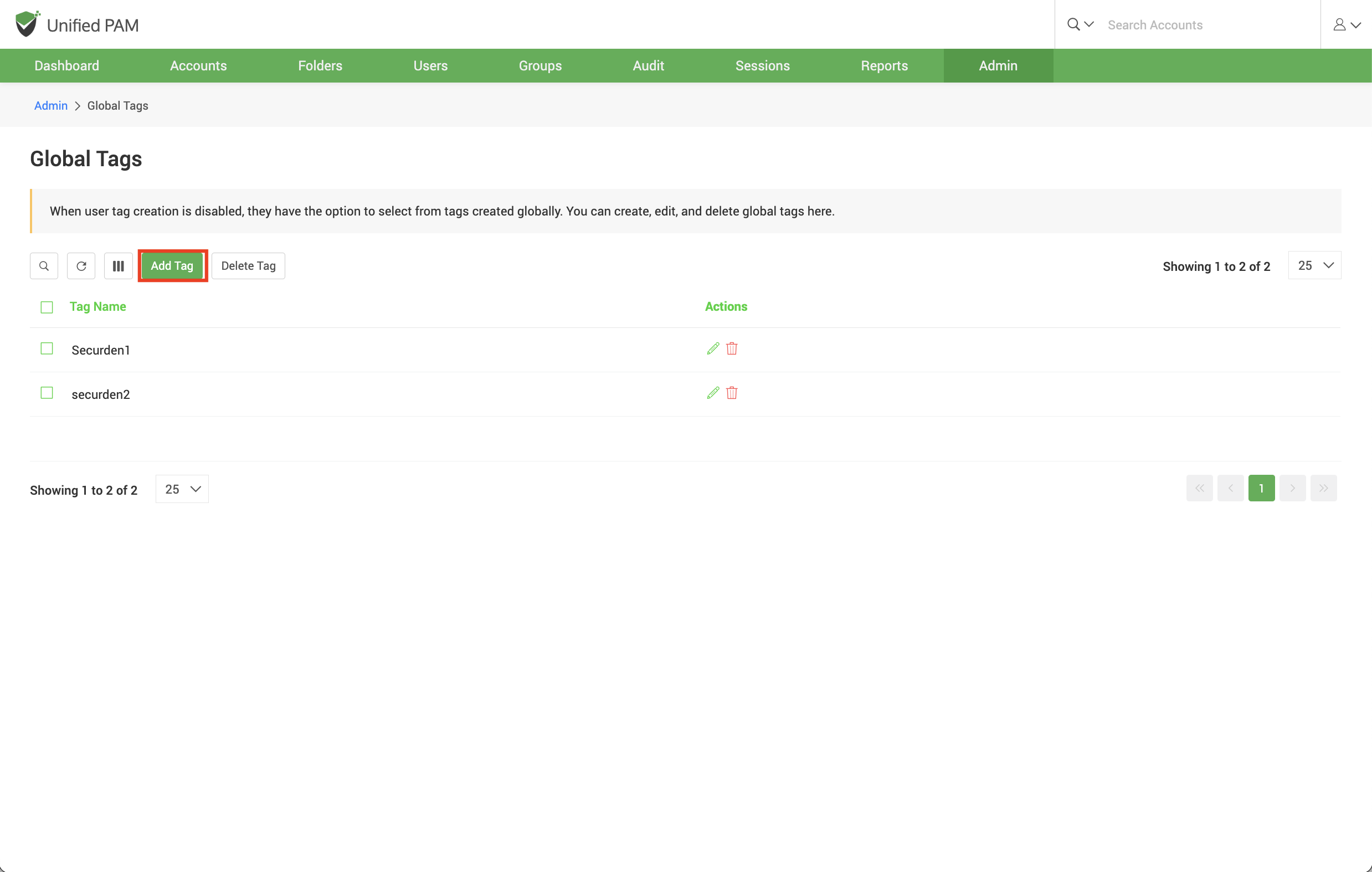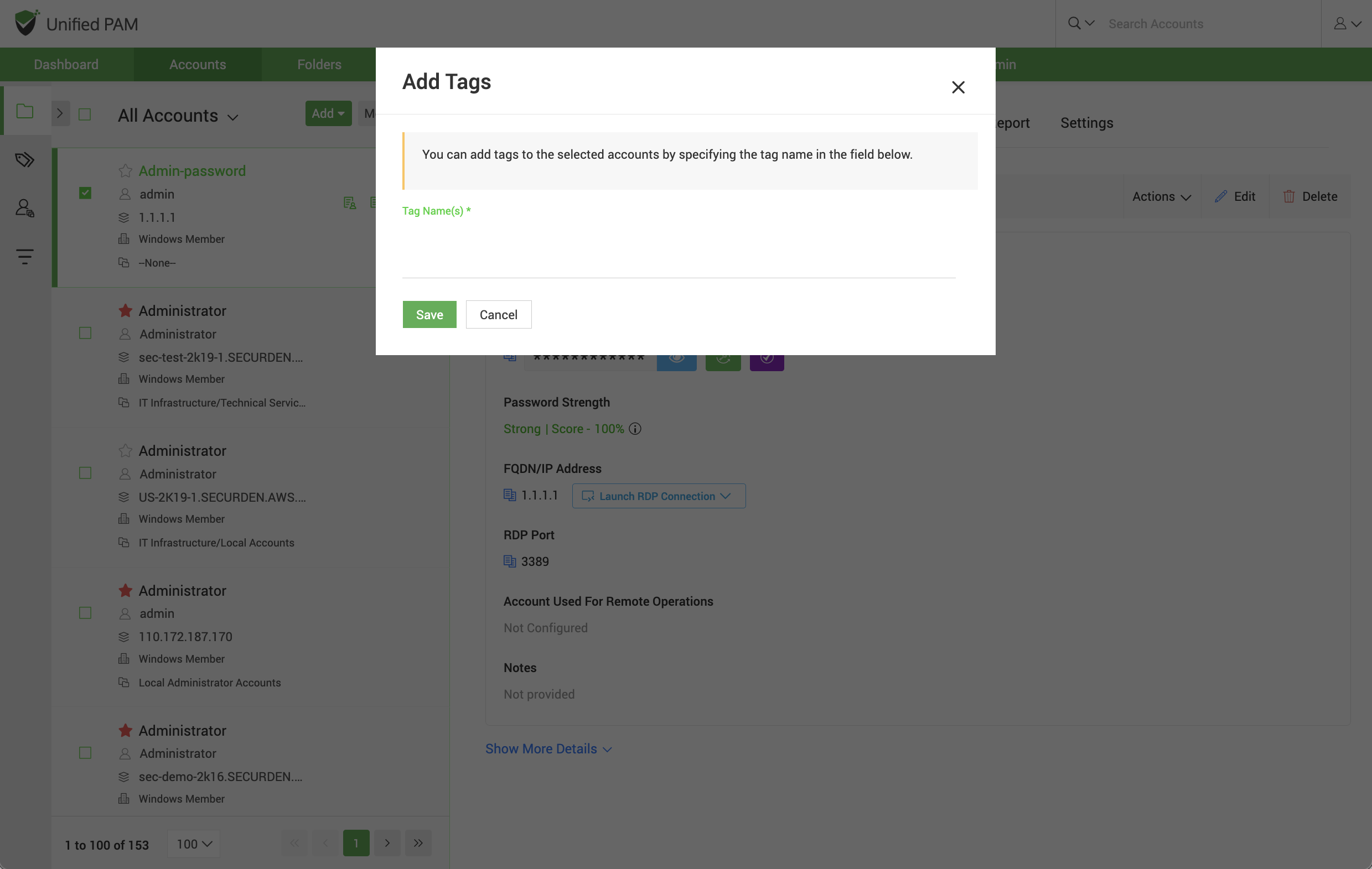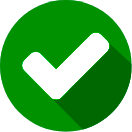Adding Accounts Manually¶
You have the option to add accounts to the repository manually. Accounts associated with domain joined computers, servers, accounts, service accounts, organizational units (OUs), and groups, can be automatically discovered and added. Other accounts such as website accounts, files, etc. that cannot be discovered automatically can be added manually and managed with Securden.
To add an account manually, navigate to Accounts >> Add >> Add Accounts Manually
- In the GUI that opens, you can fill in the fields and classify it either as a Work account or a Personal account.
Work Accounts¶
Your official accounts used for work can be added as work accounts. This account can be shared with other people in your organization.
Personal Accounts¶
Personal accounts are your own accounts. Personal accounts can be health care accounts, email accounts, bank accounts, social security numbers etc.
Note
- The primary differentiating factor between a work account and a personal account is that a personal account cannot be shared with another user in the organization.
- Personal Accounts cannot be viewed by any other user. Even the most privileged role like the Super Administrator would not have the ability to view personal accounts belonging to individual users.
- You may disable users from creating and storing personal accounts. Navigate to Admin >> Configurations to configure this option.
To add an account, select the type of account i.e., Work or Personal, and enter the required information:
- Account Title: The account title helps uniquely identify the account added, this makes it easier to add to folders and share with users as well.
-
Account Type: You can select an existing account type added in Securden or choose to create a new account type for the account being created. This helps classify the accounts for easy management and reporting. If you want to add a new type, you can do so from Admin >> Account Management >> Account Types.
Note
The Account Type determines the different attributes that you will need to fill, this could vary from being a simple text field to a specific file attachment. The most general fields are covered below.
-
Account Name: This depicts the username or login name of the account being added.
- Password: In this field you enter the actual password of the account. After doing so, Securden will take over the management of the password including periodic password resets if needed.
- Folder: If you want to add this account to a folder, you can select one of the existing folders in Securden or add a new folder by clicking on the Add folder option from the drop down.
- File: You can browse and select a file from your computer to attach with the account.
- Notes and Tags: You can add notes and tags to accounts for easy identification and management. When you want to search for accounts, content in notes / tags will come in handy.
Adding Additional Fields: You can add any number of additional fields for a selected account type. The fields you add for a particular account type will be displayed for all accounts belonging to this account type.
Click on the Add Additional Fields to enter a text, password or file associated with the account.
- Choose a Field Type, either a text password or file.
- Choose whether the added field should be made mandatory for this account type.
- Enter a field label for easy identification.
- Use the + to add more Fields and - to remove extra fields.
- Once added, click Save to continue.
Once done with entering all the fields under Add Account click Save and your account will be added to Securden.
Global Tags¶
When user tag creation is disabled, they have the option to select from a list of globally available tags to associate with each account. Administrators can create, edit, and delete global tags. All global tags created are listed here.
To configure Global tags, navigate to Admin >> Account Management >> Global tags.
To add a new global tag, click on Add Tag.
In the GUI that opens, you can select/create any number of tags and Save them in Securden.
On configuring global tags, users can associate tags with accounts shared with them or owned by them. The globally created tags are displayed as a drop- down items when each account is created.
